ARCHAEOLOGICAL SITES IN PUEBLA
Archaeology in Puebla
Puebla has a great pre-Hispanic heritage. There are diverse archaeological zones, and some of the most outstanding are: Cholula, one of the most important ceremonial centers; Cantona, known worldwide as the splendour of Mesoamerican urbanization; and Yohualichan, that means “The house of the mysterious night” at the Sierra Norte.
Map of Archaeological Sites in Puebla
Cholula was a very important city during pre-Hispanic times, called Cholollan, the space currently occupied by the archaeological site is only a small part of what was once the city, as important as Teotihuacán or Monte Albán. Cholula has its apogee during the Postclassic period and at the time of the arrival of Hernán Cortés it was the second most important city, just behind Tenochtitlán.
The Great Pyramid called Tiachihualtepetl (“handmade hill”) is the largest pre-Hispanic structure in the world in terms of volume, it covered an area of more than 400 meters on each side and was 60 meters high without counting the temple at the top . The pyramid was built for the god Chicomenaquihuitl (nine rains) and was covered with a thick layer of stucco painted in bright colors and decorated with symbolic designs.
At the top were up to seven temples, each with its own plinths, stairs, and hallways. Today there are some remains of the façade of one of these buildings and it is decorated with a very well preserved painting that represents a ritual ceremony and is known as the “Drinkers Mural”.
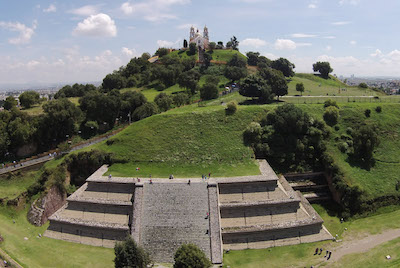
On each side of the great pyramid, there were open spaces bordered by elegantly decorated buildings. The one in the south plaza is known as the “patio of the altars”, considered one of the most spectacular places, where buildings, altars and stelae are engraved, similar to those of El Tajín, all distributed in great harmony.
There are about 8 km of tunnels that allow the observation of the different construction phases and that can be visited. Two pre-Hispanic murals stand out, the mural of the drinkers and the mural of the grasshoppers.
In the area there is a Site Museum housed in a modern building and displays many of the pieces that have been found on the site, as well as recreations of its murals and a model of the great pyramid. Monday to Sunday from 10:00 a.m. to 5:00 p.m.
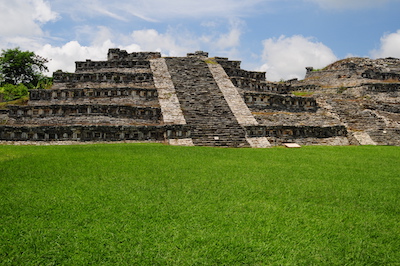
It was a Totonac settlement founded 1800 years ago, around 200 AD in the Cuetzalan region, and was occupied until 800 AD This important ceremonial center was contemporary with El Tajín, and shares an architectural style with this famous site, in particular incorporating rows of window-like niches along the terraces of the pyramids.
The complex is oriented towards the north and the longest part of the great square is from east to west; Around it are pyramidal buildings, which according to their importance have one or more bodies. Two of these buildings have been explored; one is oriented to the east and the other to the north. The latter is known as the Temple of the Greca.
Both buildings are the largest and are made up of five staggered bodies that have a slope and a deck, where there are niches crowned by a commiss made of three protruding slabs. These niches are of two types, in most, the slabs form a quadrangle and in others double square.
Its ball court is one of the largest in Mesoamerica, since it measures almost 100 meters. long.
The incredible acoustics of the Main Plaza allow you to perfectly hear the sounds emitted from the Mirador or the Plaza del Campanario. This is important, as this was a community gathering point. In addition, the buildings that surround the Main Square are perfectly aligned with the four cardinal points.
On days when the wind blows very strong, a very special sound is produced by the hiss of the air that is produced when passing through the niches. Monday to Sunday from 9:30 a.m. to 5:00 p.m.
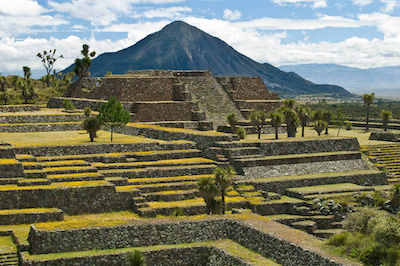
A large fortified city and an important commercial center, Cantona controlled the trade route between the Gulf Coast and the Central Highlands. The inhabitants became important producers of artifacts made of obsidian, there were more than 300 workshops where skilled craftsmen worked with obsidian.
It covered approximately 12 square kilometers and was a prominent city between 600 and 900 AD. C. reached its cultural apogee between 300 a. C. and A.D. 600, and around A.D. 150, the site had as many as 27 ball courts.
Cantona distinguished itself from other urban centers in Mesoamerica for its complex and efficient network of circulation routes; It is estimated that there were around 4 thousand streets to communicate the population with each other, as well as roads that led to fields, quarries, deposits and other towns. The old city also stood out for its asymmetric architecture that was the result of the uneven terrain.
Another characteristic feature of its architecture was the lack of cement to join the buildings. No stucco or mud was used on the external surfaces. They decorated the facades using the natural color and texture of the stones.
It is worth visiting the Plaza del Este or the Pyramid of the Mirador, with a beautiful panoramic view of the archaeological site. Other important structures are the Ball Court complex 7 and the Ball Court complex 5. It is also recommended to visit the residential units surrounded by peripheral walls.
It has a Site Museum that shows many of the pieces found in one of the largest and most populous metropolises in Mesoamerica.
In its exhibition you can see bone remains of regional animals, various pieces that were used in everyday life, musical instruments, green stone and shell ornaments and human bone remains. Monday to Sunday from 9:00 a.m. to 5:00 p.m.
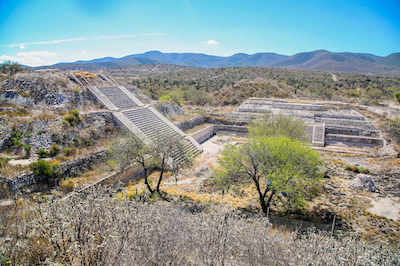
This was the largest pre-Hispanic city in the Tehuacán-Zucatlán region and was considered an important enclave for trade and interaction that the Central, Gulf and Oaxaca areas maintained in pre-Hispanic times.
It extends over an area of more than 60 ha. where there are several architectural ensembles with squares, platforms, temples and some rooms.
It has a Site Museum where Teteles’ commercial relations with other regions are illustrated, as well as objects and pieces from the area. In one of its eight rooms a video is projected that narrates the history and characteristics of this settlement. It is located in the municipality of Tlacotepec de Benito Juárez, 90 km from the city of Puebla. Tuesday to Sunday from 9:00 a.m. to 5:00 p.m.
“LA MESA” o TEHUACÁN VIEJO
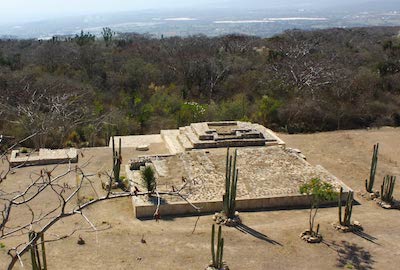
This area is located in the vicinity of the town of San Diego Chalma, on the plateau known as La Mesa, on the slopes of Cerro Colorado and with a privileged view of the Tehuacán Valley.
The Temple dedicated to the Lord of the underworld called Mictlantecuhtli stands out. In its lateral walls, located to the west and north, niches with human skulls fixed with stucco were found. This find is important, since no other similar temple dedicated to this deity had been found.
It has a Site Museum housed in a modern building with more than 80 archaeological pieces where clay figures known as “xantiles” stand out, which are exclusive to the region, as well as different gods such as: Xipe, totec, Xochipilli, Xochiquétzal and of course Quetzalcoátl.
It is located in the municipality of Tehuacán, Puebla on the Federal Highway that goes to Oaxaca, you reach the town of San Diego Chalma and continue to the San Isidro neighborhood and a little further on you reach the archaeological site. Monday to Sunday from 9:00 a.m. to 5:00 p.m.
TEPEXI EL VIEJO
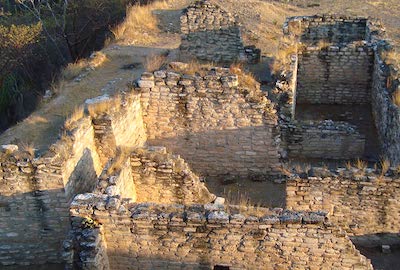
The site served as the head of one of the most important Popolocan manors and was occupied from 1300 AD. Until the Conquest. The site was occupied by the Mexica at the beginning of the 16th century, although they did not have any cultural influence, since the pieces and buildings continued to be typically Popolocas.
The archaeological remains are located in the upper part of a low hill, flanked on three sides by deep ravines.
The core part of the site is a walled fortress that is located in the upper part of a low hill, in the middle of two deep ravines (140 meters high. The area is made up of a wall that surrounds the exposed archaeological structures, consisting of squares and ceremonial mounds. Tuesday to Sunday from 9:30 a.m. to 5:00 p.m.
CERRITOS DE SAN CRISTÓBAL TEPATLAXCO
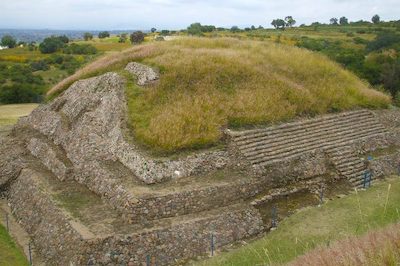
It is located very close to San Martín Texmelucan and to date the origin of its ancient settlers is unknown. Its name is due to its location, since it is located near this population.
The archaeological site was populated between 300 BC. and 600 AD and it is considered a fortified place of Olmec influence, which was possibly a ceremonial and military center. It has nine pyramidal bases with heights of approximately 2.5 to 9 meters, some of them in the ceremonial area and others more dispersed. Many of them built on the banks of the ravines.
The structures called Mound A and East Slope stand out, where a staircase was discovered where five steps of volcanic stone are still preserved. Wednesday to Sunday from 8:00 a.m. to 5:00 p.m.
TEPAPAYECA
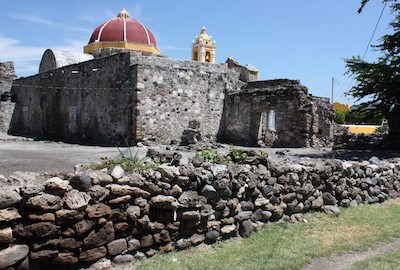
It is a small area, since most of the pre-Hispanic buildings are under the houses of the town. The site was occupied in the Late Postclassic (1200-1521) and was a ceremonial center where 5 buildings were built, of which there are only vestiges of the main temple.
On the largest building the Dominicans built a chapel in the 16th century and in it you can see remains of the walls of the pre-Hispanic building.
It is located in a town of Tepapayeca that belongs to the municipality of Tlapanalá, an hour and a half south of the City of Puebla. Monday to Sunday from 9:00 a.m. to 6:00 p.m.
More Tourist Attractions in PUEBLA
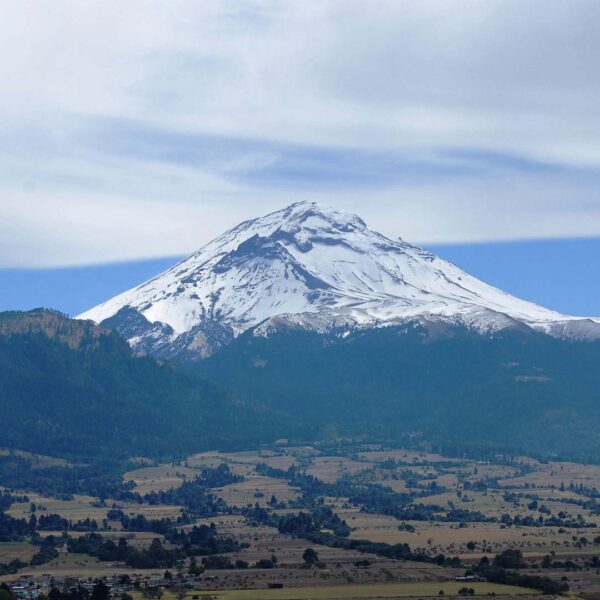
Ecotourism and Adventure in Puebla
Due to the natural richness of the state, there are a wide selection of activities for people who love nature, such as mountain climbing, photography, horseback riding, hiking, fishing, rafting (through rapids) speleology, hang gliding (delta and paraglide) cycling, camping and rappel among others.… Read More
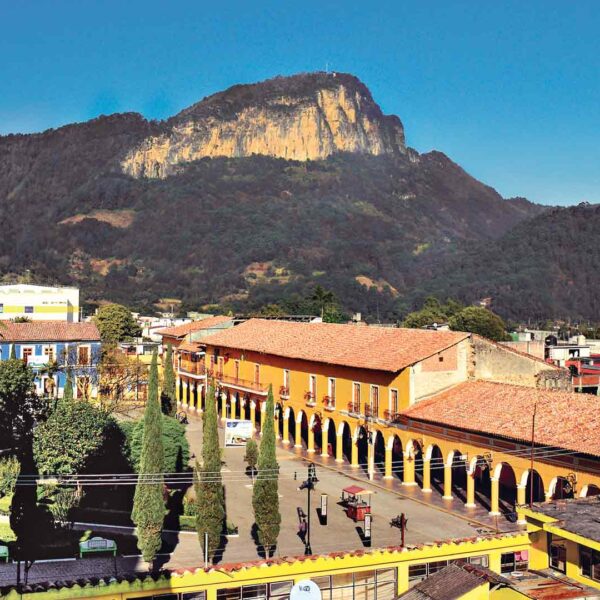
Magical Towns in Puebla
Among the ideal tourist places to organize a weekend getaway, the Magical Towns of Puebla stand out. Each one has its own personality and activities for all tastes. You can stroll through its streets and admire its architecture rich in history. In each one you will find many options to try local cuisine and classic Poblano dishes. Do not forget to visit its markets and fill yourself with colors, flavors and crafts, from the famous Puebla talavera to indigenous artistic expressions. And if you prefer contact with nature, you also find options to quench your thirst for adventure.… Read More

Gastronomy of Puebla
The gastronomy of Puebla is internationally recognized for its flavor, its variety and its history. It is the result of the fusion of the culinary tradition of Mexican origin (prior to the colonial period) and the influences of Spanish, French and Arabic cuisine. Each of them contributed not only ingredients – such as tomato, onion, oil – but also utensils and processes that enriched the culinary offer of the state and considered one of the most representative in Mexico.… Read More
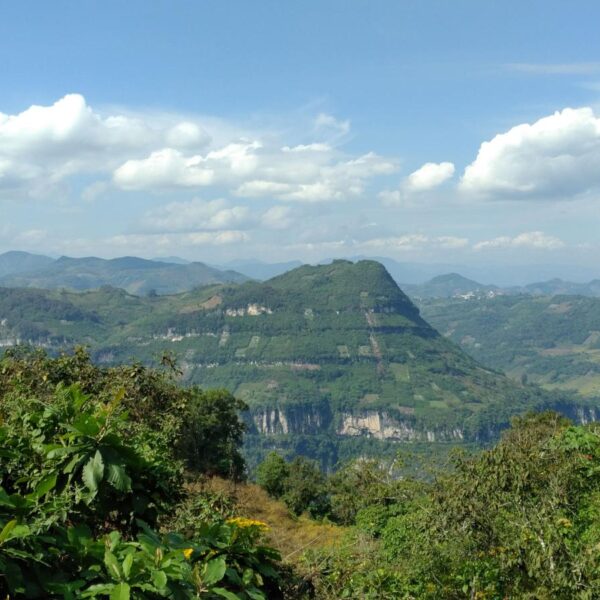
Puebla City Surroundings
Puebla has everything for that escape you long for, with its cloud forests, mountains, hot springs, waterfalls, rivers, lagoons and even volcanoes, together with its magical towns, its gastronomy and its culture. You don’t need to cross borders, board a plane or travel whole days by road to enter paradise. There are many places near Puebla to visit and enjoy. The surroundings of Puebla and its natural beauties are countless, the imposing Popocatepetl volcano, an excellent climate, the colorful markets, its flavors and textures, and the smile of a local child that makes you feel at home is never lacking.
… Read More
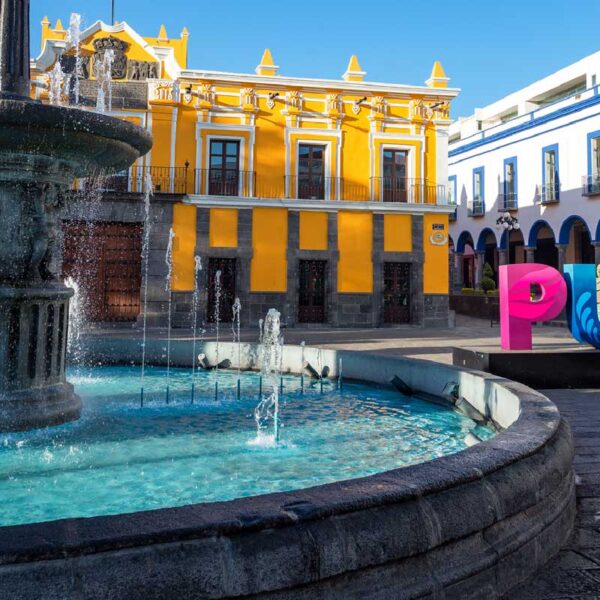
Puebla City
The City of Puebla is a place full of culture, charm, traditions, history, beliefs… The magnificent trace of the city has made up the legend that were the angels who did it. Puebla is a jewel of world’s architecture and has been able to adapt spaces and fill them with life and movement. It is located 85 miles away from Mexico City (CDMX). Modern highways communicates with all the main cities around the country. It has an International Airport, named Hermanos Serdán, as well as an important Bus Station. … Read More
Guided Tours in PUEBLA
Flights & Hotels in PUEBLA
More Tourist Attractions in MEXICO

States Of Mexico
Mexico has an incredible diversity of landscapes, where the beauty of its beaches, internationally recognized, stands out. In its vast territory of coasts, there are beaches of unparalleled beauty, and colorful landscapes. A large network of first-class hotels and tourist services is available to visitors to these beaches. Mexico is also mystical places, dotted with archaeological testimonies inherited from its original inhabitants. Monuments made by the Mayas, Aztecs and Toltecs are located in magical landscapes, like lighthouses in an ocean of natural beauty. They offer visitors buildings that tell their history, and museums that collect their cultural heritage. And that keep alive ancestral traditions, in ceremonies and festivals, where you can enjoy cultural activities and entertainment.… Read More

Archaeological Sites
The Archaeological Zones are the cultural past of every Mexican. You will be amazed at the ambient, nature and the environment that surrounds them. Climbing to the top or being around it will take us back in time to admire every detail. México is a country of culture and traditions, many of which we have inherited from the pre-Hispanic inhabitants of this vast territory, although it is true that there were more settlements in the central and southern part of the country, it is also possible to find some archaeological remains in the north.
… Read More

Ecotourism and Adventure
Mexico is one of the best countries for Ecotourism as it has a great variety of flora and fauna, as well as a large number of refuges for extraordinary species. You can enjoy recreational activities of appreciation and knowledge of nature through contact with it, such as: stargazing, observation of natural attractions, wildlife and bird watching. Throughout México there are more than 176 protected natural areas, 5 of them considered by UNESCO as Natural Heritage of Humanity. Just for this and much more, we believe that Mexico is a Paradise for Ecotourism.… Read More

Gastronomy
The Gastronomy of Mexico has a great diversity of typical dishes, which is why it was recognized by UNESCO as Intangible Heritage of Humanity. The basic and representative ingredients of Mexican dishes are: corn, coriander, chili, beans, piloncillo, nopal and tomato. Mexican cuisine is also characterized by its sauces, which serve as an accompaniment to traditional dishes, prepared based on spices.… Read More

Beaches
On the Beaches of Mexico you can immerse yourself in the intense blue ocean of the Pacific bays, sunbathe on the shore of the warm and transparent waves of the Caribbean Sea in Quintana Roo or even rest on the beautiful coasts of the Gulf of Mexico. Mexican beaches hide wonderful secrets for the traveler. By visiting them, in addition to enjoying the excellent climate and water activities, you can discover splendid archaeological sites and interesting colonial cities without traveling long distances.… Read More

Traditions in Mexico
It is practically impossible to make a meticulous, and above all, accurate selection of the places to visit in Mexico. Each place that our country houses is unique and beautiful in its own way. Mexico, with its nearly 2 million km², has a large number of scenarios to offer, as well as endless activities to do. Do not lose your way and enter the places to visit in Mexico. In Mexico, apart from the beaches and its famous archaeological sites, there are many other really interesting sites and activities that you should know. In the surroundings of the main cities you will find places full of culture and tradition, where you can spend relaxing, interesting and fun vacations. On your trip through Mexico you cannot stop obtaining souvenirs, the crafts that are made here are of the highest quality and recognized worldwide. A shopping tour cannot be missed.… Read More

Magical Towns
A Magical Town is a place with symbols and legends, towns with history that in many cases have been the scene of transcendent events for our country, they are places that show the national identity in each of its corners, with a magic that emanates from its attractions ; visiting them is an opportunity to discover the charm of Mexico. The Magical Towns Program contributes to revalue a set of populations in the country that have always been in the collective imagination of the nation and that represent fresh and varied alternatives for national and foreign visitors. A town that through time and in the face of modernity, has conserved, valued and defended its historical, cultural and natural heritage; and manifests it in various expressions through its tangible and intangible heritage. A Magical Town is a town that has unique, symbolic attributes, authentic stories, transcendent events, everyday life, which means a great opportunity for tourist use, taking into account the motivations and needs of travelers.… Read More

Capital Cities
Folklore, gastronomy, literary culture, art and exhibitions, is what you will find in the capitals of the states of Mexico. To the north, colonial Mexico, Puebla, Guadalajara, Guanajuato, the Sonoran desert and the California peninsula. To the east Veracruz and the gulf. To the west Acapulco, Oaxaca and Tuxtla Gutiérrez. And to the south the Riviera Maya and the pyramids of Chichén-Itzá, Tulúm and Cobá in Yucatán, Palenque in Chiapas, the cenotes, and the Central American jungles.… Read More

